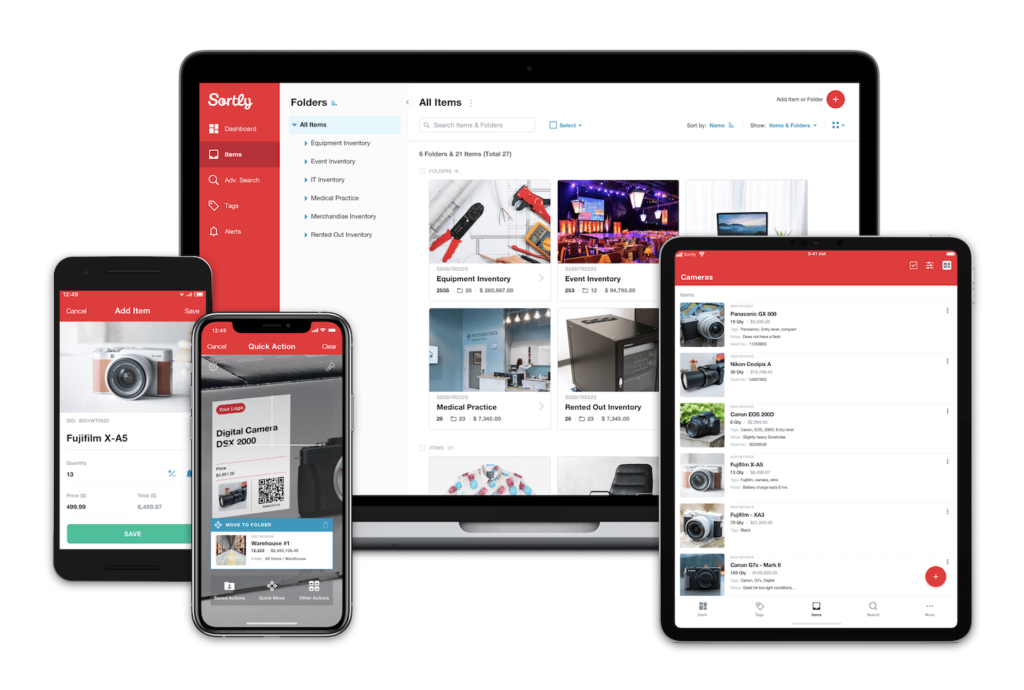Is perpetual or physical inventory the best method for your business? Knowing the difference between the methods, how they compare, and how they affect your processes will help you make the right decision.
What is the difference between perpetual inventory and physical inventory?
How do perpetual and physical inventory compare?
Keep in mind that neither perpetual nor physical inventory eliminates the need to visually inspect items and ensure they aren’t damaged, spoiled, or stolen. But there are differences in the technology you’ll need, the data you’ll receive, and the cost of inventory management systems.
Perpetual inventory
- Technology – Perpetual inventory is impossible to keep track of manually. It requires automation, and advanced software is available to help you do it. You can either enter or scan your goods into the software.
- Data – It provides a real-time accounting of your goods—wherever they are in the process. If items are bought, sold, discarded, or moved to another location, you’ll instantly see it and understand what happened. Every transaction—quantity and cost—is updated automatically.
- Cost – Depending on the size of your business and the technology needed to track its inventory, setup costs vary from minimal to high.
Physical inventory
- Technology – You’ll establish a schedule to periodically count each item in the inventory and record the results. You can create a record-keeping system. But easy-to-use accounting software is available to manually enter or scan inventory items and their cost into the software.
- Data – You’ll refer to your manual or automated records to compare previous and existing inventory. You can choose the detail you want to track as items are bought, sold, moved, or discarded. If you use accounting software, it’s easy to run reports and compare data.
- Cost – If you keep manual records, setup costs are minimal. Fees for basic accounting software or apps are minimal to moderate.

Free Ebook: Getting Started With Inventory Tracking
This easy, comprehensive guide will help you:
- Determine your business's inventory levels and needs
- Organize your inventory for optimal tracking
- Follow tried-and-true best practices for inventory management
How can you decide which inventory method to use?
What factors can help you decide whether perpetual or physical inventory is right for your business?
Inventory size – The size of your inventory determines how much time it takes to manage it. It’s easy to count a small inventory manually, but counting a large inventory can be overwhelming. Anticipate your projected growth and plan for your long-term needs.
Business locations – Does your business have multiple locations—perhaps with goods exchanged between them? Weigh the pros and cons of physically tracking items at each site vs. using perpetual inventory with shared data.
Transaction volume – Is your business a startup, or is it established? Think about the number of your daily transactions and how frequently you need to access data about purchases, sales, and inventory status.
Budget – Calculate the cost of labor for periodic physical counts vs. a system that provides perpetual data.
Whether you choose perpetual or physical inventory, you don’t have to keep it strictly manual. You can research online and find a large variety of accounting and inventory software and apps. And you’ll find them at varying costs to fit your budget and help simplify your inventory tracking process.
About Sortly

Having the best tools in place is essential to helping your business get where it needs to be. Sortly inventory management software makes staying on top of inventory simple, streamlined, and fast.
Sortly helps you track, manage, and organize your inventory—from any device, in any location. We’re an easy-to-use inventory solution that’s perfect for small businesses. Sortly builds inventory tracking seamlessly into your workday so you can save time and money, satisfy your customers, and help your business succeed.
With Sortly, you can track inventory, supplies, parts, tools, assets like equipment and machinery, and anything else that matters to your business. It comes equipped with smart features like barcoding & QR coding, low stock alerts, customizable folders, data-rich reporting, and much more. Best of all, you can update inventory right from your smartphone, whether you’re on the job, in the warehouse, or on the go.
Whether you’re just getting started with inventory management or you’re an expert looking for a more efficient solution, we can transform how your company manages inventory—so you can focus on building your business. That’s why over 15,000 businesses globally trust us as their inventory management solution.
Start your two-week free trial of Sortly today.




